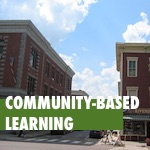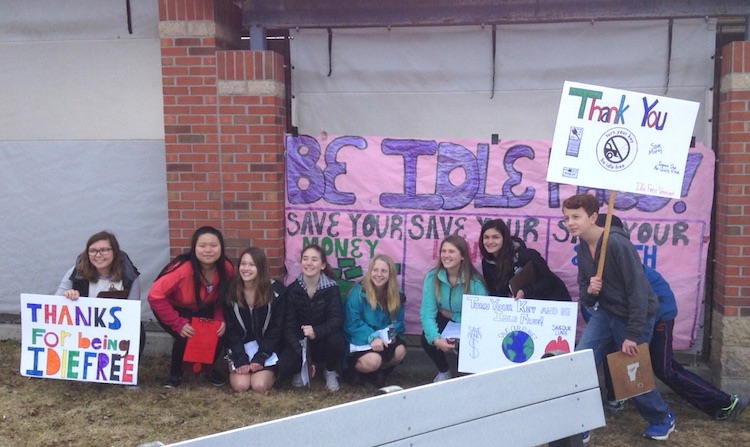8th grade scientists tackle carbon emissions at a busy traffic circle
 This past year, Shelburne Community School middle grades students took part in Idle-Free VT‘s ongoing efforts to reduce carbon emissions from idling cars near schools.
This past year, Shelburne Community School middle grades students took part in Idle-Free VT‘s ongoing efforts to reduce carbon emissions from idling cars near schools.
The students’ outreach efforts led to a 79% measured reduction in carbon emissions at the school’s traffic circle, while an unanticipated response from drivers led the students to initiate a change in the study’s protocol.
Idling may have its environmental impact but it also has an effect on humans. Fuel in the throat or eyes can cause cancer, asthma, and irritation. Although starting your car a few minutes earlier than you intend to drive in it, keeps you warm in the winter, and cool with air conditioning in the summer, is it really worth the price you have to pay when your bill is due? If you idle every day, waiting for your child at pick up, it would cost you $55.87, considering the average gas price is currently $1.85 and we burn 32 gallons per year.–Sydney Deavitt, 8th grade, writing for the Shelburne Community School newsletter (pdf)
Shelburne takes part in statewide campaign for environmental improvement
During the 2015-2016 school year, Idle-Free VT recruited eight schools around Vermont to implement a data-driven outreach campaign.
The campaign consisted of two parts. In the early part of the year, students approached drivers sitting in their cars with the engines on. They spoke with the drivers about idling and carbon emissions. They also measured those emissions.
Then, during the spring, the students measured the emissions again, but without the driver interactions.

According to Idle-Free VT, five of the eight schools who participated in last year’s campaign successfully completed the protocol. That combined to reduce idling by 46.4%. When all the data was tallied for Shelburne Community School, the students’ efforts reduced idling at the school by 79%.
According to Wayne Thibaud, director of the full Idle-Free VT program:
In our 2015-16 Idle-Free Schools campaigns, Shelburne Community School reduced idling by 79%, the best result! This means that SCS, over a school year, will potentially reduce fuel consumption by 195 gallons and CO2 emissions by 3,900 pounds. Not to mention better air quality for the students and everyone else.
SCS teachers/leaders, Lisa Phelps and Peg Rosenau and their students (with great support of school administration) ‘went the whole nine yards’ in their campaign to make it a huge success!
Shelburne STEM educator Lisa Phelps estimates that the school’s traffic circle sees between 80 and 100 cars per day during the peak pick-up time of 2:45-3:15 p.m. Some cars take as long as eight full minutes to enter and exit the circle.
Community residents open to change — with caveats
In general, community response to the campaign, and the driver interactions, were positive in nature.
Deb, a resident of Shelburne, commented of the students, “I thought they did a good job. They explained the project that they’re doing, and gave me some good information on the difference it can make to not leave your car idling while you’re waiting. I was impressed.”
However, some drivers remained unconvinced. Ryan, another community resident waiting at the circle (with his engine off), offered: “I think if it was colder out, that could be a problem. I know if I was waiting here for ten minutes and I was freezing, I’d probably turn my car on and get the heat going.”
Students change protocol in response to driver behavior
There was one unintended consequence of the Idle-Free campaign specific to Shelburne Community School. After the initial round of driver-interactions, students and staff noticed a marked drop-off in the number of cars. That was quickly explained when they discovered some drivers had moved their cars to the other side of the school. This led the students to petition educator Phelps to undertake the second portion of the campaign — the non-interactive measurement portion — with a degree of camouflage.
“We were not very camouflaged our first couple days out,” reported Phelps. “And we actually saw a dramatic decline, just because we felt that people knew we were out there watching. [The students] brought it up. They had their clipboards and we were all prepared with all our paraphenalia and they said, ‘No, we don’t want to do it this way.’ And they decided to have their backpacks. And they blended in just like all the other kids then.”
According to Phelps, this year’s 8th graders, inspired by last year’s project, are interested in running the campaign again starting this fall.



Comments are closed.